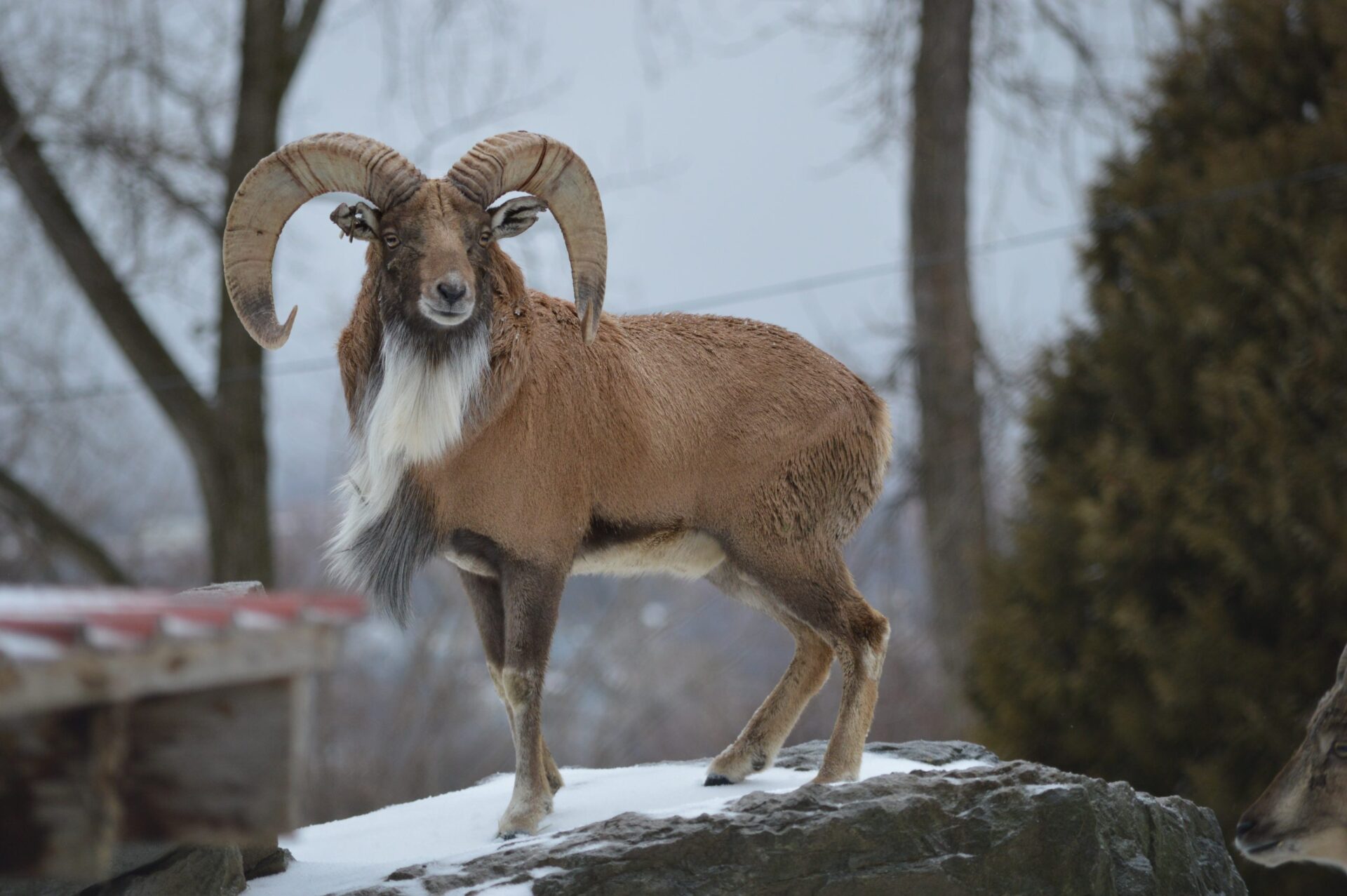
The Urial, also known as the Arkarsis sheep or shapoorkohi, is a mesmerizing creature that inhabits the mountainous regions of Central Asia. With its majestic appearance and unique characteristics, the Urial has captured the attention of animal enthusiasts and researchers alike. These magnificent animals are part of the wild sheep family and are closely related to domesticated sheep. With their striking horns and agile nature, Urials are truly a sight to behold in their natural habitat. In this article, we will delve into 15 fascinating facts about Urials, shedding light on their behavior, physical attributes, and their significance within the ecosystem. So, let’s embark on this enlightening journey into the world of these incredible creatures.
Key Takeaways:
- Urial, a wild sheep species, has unique adaptations for climbing, grazing, and surviving extreme environments, but its population is at risk due to habitat loss and hunting.
- Urial’s impressive horns, hierarchical social structure, and role in maintaining ecosystem balance make it a fascinating and important species, despite facing threats to its survival.
Urial is a species of wild sheep.
Urial, scientific name Ovis orientalis vignei, is a species of wild sheep native to the mountainous regions of Central Asia.
Urial has a unique appearance.
Urial is characterized by its long, curved horns and a dense coat of fur that helps it adapt to cold and harsh environments.
Urial males are larger than females.
Male urials, called rams, can weigh up to 200 pounds, while females, called ewes, typically weigh around 100 pounds.
Urial has excellent climbing skills.
Urial is an agile climber and can navigate steep and rocky terrains with ease, using its sharp hooves and strong legs.
Urial is a herbivorous animal.
Urial mainly feeds on grass, herbs, and leaves, using its strong jaw and sharp teeth to graze on vegetation.
Urial has adapted to extreme weather conditions.
Living in high-altitude mountainous regions, urial has developed adaptations to survive extreme temperatures and low oxygen levels.
Urial has a hierarchical social structure.
Urial forms herds led by a dominant male, with females and their offspring also maintaining a specific social order within the group.
Urial has a breeding season.
Mating typically occurs during the autumn months, with males engaging in fierce battles to establish dominance and access to females.
Urial males have impressive horns.
The horns of male urials can grow up to 3 feet in length and have distinct spirals, which add to their striking appearance.
Urial population is at risk.
Due to ongoing habitat loss and hunting activities, the urial population has been declining in certain areas, making it a vulnerable species.
Urial has been domesticated for centuries.
Urial has been domesticated for its meat, milk, and wool, and is an important livestock animal in some regions.
Urial plays a role in the ecosystem.
Urial’s grazing habits help maintain the balance of vegetation in its habitat and support other species in the ecosystem.
Urial is known for its agility and speed.
Urial can run at high speeds, reaching up to 40 miles per hour, enabling it to escape from predators such as wolves and snow leopards.
Urial has a wide geographical range.
Urial is found in various countries, including Iran, Pakistan, Afghanistan, Tajikistan, and India, each with its own subspecies.
Urial has adaptations for water conservation.
Living in arid regions, urial has evolved to efficiently utilize water and can survive for extended periods without drinking.
Conclusion
In conclusion, Urial is a fascinating animal with unique characteristics and adaptations. They are a type of wild sheep that inhabits mountainous regions in South Asia. Urial is known for its impressive horns, which curve backward and can reach up to 80 centimeters in length. They are superb climbers and have specialized hooves that enable them to traverse steep and rugged terrains effortlessly. Urial is a social animal and lives in herds that consist of females and their offspring. Their diet primarily consists of grasses and leaves found in their natural habitat.Despite facing several conservation challenges, such as habitat loss and illegal hunting, efforts are being made to protect and conserve the Urial population. Through conservation initiatives and proper management practices, it is hoped that these magnificent creatures will continue to thrive in their natural habitats for generations to come.
FAQs
Q: What is a Urial?
A: Urial is a type of wild sheep found in the mountains of South Asia.
Q: What do Urials look like?
A: They have a stocky body, long legs, and impressive horns that curve backward.
Q: Where do Urials live?
A: They inhabit mountainous regions in countries such as Pakistan, India, Afghanistan, and Iran.
Q: What do Urials eat?
A: They primarily feed on grasses, leaves, and other vegetation found in their natural habitat.
Q: Are Urials social animals?
A: Yes, Urials live in herds consisting of females and their offspring.
Q: What are the main threats to Urials?
A: Habitat loss due to human activities and illegal hunting pose significant threats to the Urial population.
Q: What are the conservation efforts for Urials?
A: Several organizations and governments are working towards conserving Urials through habitat protection and anti-poaching measures.
Q: How can I help in Urial conservation?
A: You can support conservation organizations, spread awareness about the importance of wildlife conservation, and avoid contributing to the illegal wildlife trade.
Was this page helpful?
Our commitment to delivering trustworthy and engaging content is at the heart of what we do. Each fact on our site is contributed by real users like you, bringing a wealth of diverse insights and information. To ensure the highest standards of accuracy and reliability, our dedicated editors meticulously review each submission. This process guarantees that the facts we share are not only fascinating but also credible. Trust in our commitment to quality and authenticity as you explore and learn with us.
